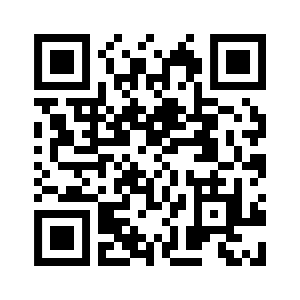
Excited to attend college in the United States? You’re in good company!
There are over a million international students currently attending American colleges, and that number is steadily increasing.
Before you send out your applications, make sure you have a plan to pay for your tuition, your room and board, and everything in between.
Here’s a quick guide to student loans (and scholarships) for immigrants.
Part 1: The Cost of College
It’s no secret that American colleges are expensive.
In fact, private universities in the United States average $55,000 for only one year of tuition.
As for Ivy League schools like Harvard, Yale, and Dartmouth? They average closer to $77,000 per year.
In general, college tuition rates in America have risen five times the rate of inflation since 1970.
These hefty price tags and statistics explain why over 44 million Americans are burdened with $1.7 trillion in student loan debt.
That’s why financial aid, grants, and scholarships are so essential – especially if you’re an international student. After all, every dollar helps pay for tuition, housing, health insurance, books, supplies, and more.
Part 2: Federal Aid Eligibility
Before we get into the specifics of student loans, be sure to keep this fact in mind: there are multiple avenues to obtaining financial aid for immigrants.
If one pathway isn’t open to you, there will certainly be others.
Let’s start with the question of federal aid – that which is provided by the United States Department of Education.
In most cases, international students are not able to apply for U.S. federal student aid (i.e. loans and work-study).
If you are an undocumented immigrant or have been granted Deferred Action for Childhood Arrivals (DACA), you are also not eligible for federal student aid.
However, there are several notable exceptions where you may be considered an “eligible noncitizen.”
These categories include:
- U.S. nationals (including natives of American Samoa or Swains Island).
- Citizens of Federated States of Micronesia, Republic of the Marshall Islands, or the Republic of Palau.
- Immigrants with refugee status.
- Cuban-Haitian entrants.
To view the complete list of non-U.S. citizens that may qualify for federal student aid, click here.
Part 3: Filling Out the FAFSA
Though you may be ineligible for federal student aid, some colleges may still ask you to complete the FAFSA – The Free Application for Federal Student Aid.
Many schools require this form, as it helps them identify how much financial aid you need, and whether they (or the state in which they’re located) can provide any support.
You may also be asked to complete the ISFAA – the International Student Financial Aid Form.
Note: All colleges and universities have their own protocols for international students. Before you complete any financial aid forms, be sure to contact each school’s financial aid office.
Part 4: In-State Aid for Undocumented Immigrants
While federal aid is largely reserved for U.S. citizens, many states are making a concerted effort to help undocumented immigrants obtain financial support.
These states include California, Colorado, Connecticut, Florida, Illinois, Kansas, Maryland, Minnesota, Nebraska, New Jersey, New Mexico, New York, Oregon, Texas, Utah, Virginia, Washington, and the District of Columbia.
Within those states, many colleges and institutions have established specialized scholarship funds.
For example, The University of California at Berkeley has earmarked a $1 million scholarship fund for undocumented immigrants since 2012.
Part 5: Private Student Loans
If you don’t qualify for federal aid, you’ll still be able to pursue an array of private student loans for immigrants.
Forbes recently collated the leading international student loans, which you can view online here.
In many cases, banks and credit unions will require borrowers to have a co-signer who is either a U.S. citizen or a lawful permanent resident. This co-signer could be a friend, a relative, a colleague, or anyone willing to support your journey through higher education.
Still, not all private lenders will require a co-signer.
For example, MPower Financing helps international and DACA students with a fixed-rate student loan plan “secured by your future earnings potential, not by cosigners or collateral.”
Click here to learn more.
Note: Are you from a Latin American or Caribbean country? Be sure to check out the Rowe Fund program, which provides interest-free loans up to $15,000 to help undergraduates fund their final two years of college.
Click here to learn more.
Part 6: Additional Sources of Financial Aid
In addition to obtaining private loans, it’s also very important to investigate any scholarships that might be available to you.
After all, scholarships are considered “free money” – the kind you never have to pay back!
Here’s the good news: there are many scholarships available to international students.
However, due to the preponderance of scholarships, be prepared to dedicate significant time to researching and applying to the ones that intrigue you the most.
To jumpstart your search, check out these scholarship resources and competitions:
If you’re a DACA recipient or undocumented student, there are also a number of scholarships available to you.
Click here to view the most current list with application deadlines beginning December 1, 2022.
Note: Always avoid suspicious scholarships, grants, or any assistance program that asks for money or personal information in exchange for financial support.
Stay Connected With uLink
At uLink, we’re dedicated to helping families stay connected around the world.
After you get settled in the United States, you’ll still be able to support your loved ones by sending money home in a matter of minutes.
With the uLink app, you can skip the long wait times and hidden fees and send money home fast.
Thanks to our global network, you can send money abroad for cash pickup, bank accounts, and even ewallets in select countries. And with our great exchange rates and fees starting as low as $0, you can send more money home than ever before.
Miles from home – just moments away with uLink.









